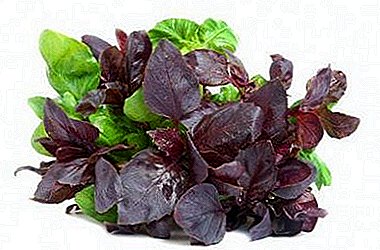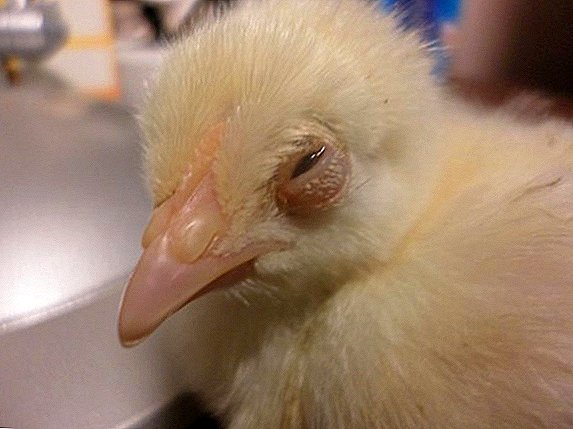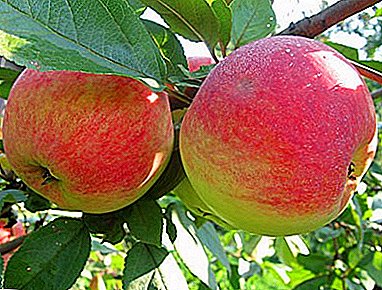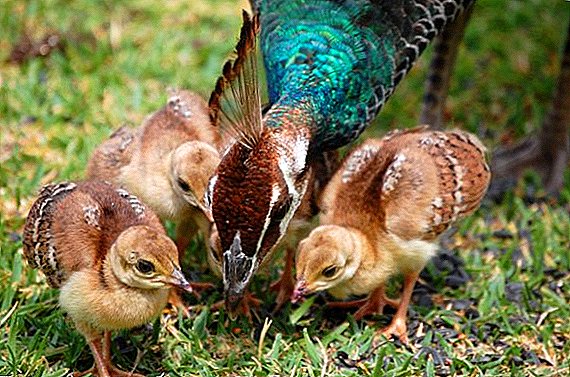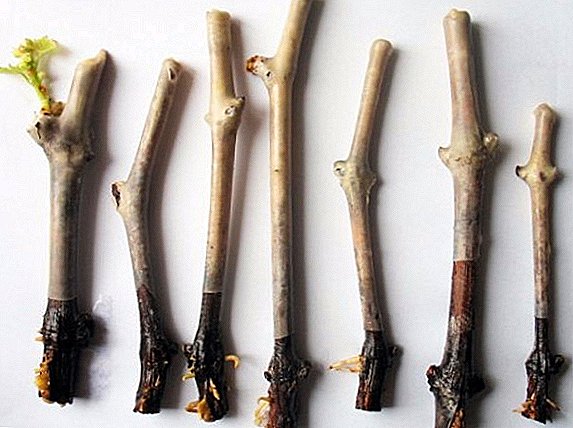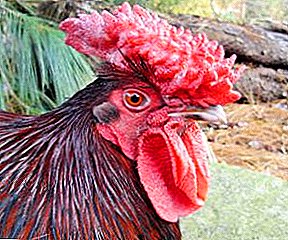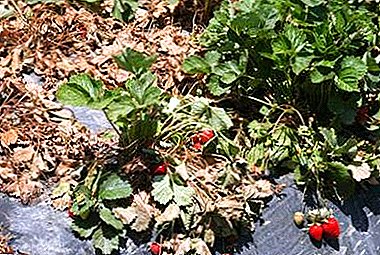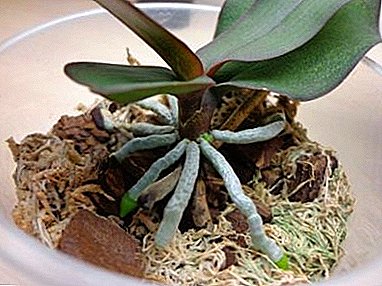
Phalaenopsis is rightfully characterized as a resistant and hardy variety of orchids. In addition, it combines tenderness and beauty.
The main indicator of the health of this species is the state of the root system. The roots for the exquisite phalaenopsis orchid are a sore point.
From the article you will learn the structure of the root system of the flower. Difference of healthy roots from patients. What kind of care for the plant is considered correct and which can harm?
As well as pruning and building up the roots of the orchid phalaenopsis, to which diseases and pests the plant is exposed.
Definition
Roots - underground vegetative organ, which performs the main functions that contribute to the development of plants. Epiphytes have a distinctive feature - the air system of the roots. These are the accessory organs that grow from the main ones. Elevated roots, as a rule, more and thicker than normal.
The importance of the root system in plant life
 The root is the most sensitive organ in orchids, which is responsible for vital processes.
The root is the most sensitive organ in orchids, which is responsible for vital processes.
- The flower is attached to the roots of the substrate, thereby maintaining a vertical position.
- Roots absorb moisture and micronutrients that are found in the soil.
- They, along with the leaves are involved in the process of photosynthesis.
In nature, orchids inhabit the tropical climate, where it is humid and heavy rains. In the tropics, even in the period of drought, aerial roots can provide the plant with nutrients and moisture due to dew or high humidity.
Structure
The root of the flower has an unusual structure and consists of three parts:
- The root itself, which is not visible externally. It is thin and durable, has a light green tint.
- Velamen, is a hollow shell of coarsened, inanimate tissue, inside filled with air.
- Growing tip. Usually it reaches 1 cm in length, looks translucent. The tip is not covered by anything, so it is easily injured, which can provoke a stop in the development of the root.
The substance velamen is considered unusual and at the same time multifunctional. Its main functions are: absorb and accumulate water, useful substances, absorb moisture from the air environment and directly protect the root from mechanical injury and damage.
How to distinguish a healthy root system from the patient?
The first condition of a healthy root is firmness and elasticity. And accordingly, on the contrary, if the root is soft, when pressed it breaks or dents remain, most likely, it is not capable.
External signs of a healthy rhizome:
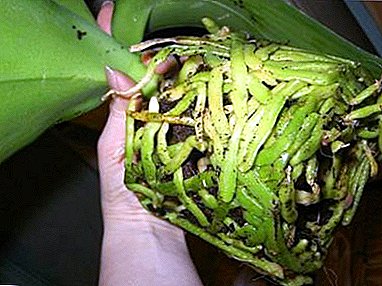 smooth structure;
smooth structure;- meatiness;
- density;
- green, although the color may vary when interacting with the substrate or mineral fertilizers.
Experienced growers suggest checking the status of the root system., not only on the basis of external signs, but also empirically.
To make sure that the root system is alive, you need to pull the plant out of the pot and immerse the lower part in water. After 2-3 hours to get it. Viable roots will acquire the above symptoms. If the shoots remain sluggish, pale - feel free to remove.
Watch a video about healthy and diseased plant roots:
Proper and improper care at home
Competently care for the orchid, always know what to do with the roots of the flower, it is important for its health and flowering. You should not worry if the air roots of the plant hang over the pot - this is absolutely normal. With quality care, their growth will stop.
| Right | Wrong |
| Moisturize flower only after complete drying of the substrate. | To organize watering on certain days, dates, independence from the state of the soil. |
| Use soft, clean water. | Apply water for irrigation, regardless of quality. |
| Mandatory drainage layer. | Lack of drainage in a flowerpot. |
| Use for orchid light, plastic pot. It will provide an opportunity to visually inspect the root system and will not interfere with the process of photosynthesis. | Application of an opaque, ceramic pot. |
| Choose a primer specifically for orchids, according to the requirements of the substrate. | Use for planting garden land. |
| Do not expose the phalaenopsis root system to overheating. | Place the plant on the windowsill, near the radiators. |
| Mineral fertilizers in pre-moistened soil. | Fertilize dry soil. |
| On clear, hot days, the flower pritenyat, in order to avoid sunburn. | Place the orchid in direct sunlight. |
Step by step instructions: how to cut?
 When transplanting or regular inspection were found yellow, dry roots, then they should be removed. All the same, they no longer carry any benefit to the plant. However, it is worthwhile to soak the root system in water to make sure that their beliefs are correct.
When transplanting or regular inspection were found yellow, dry roots, then they should be removed. All the same, they no longer carry any benefit to the plant. However, it is worthwhile to soak the root system in water to make sure that their beliefs are correct.
Is it possible to trim aerial roots? Yes, you can, but only if they are rotten and dry.
- We get phalaenopsis from the pot.
- Remove excess substrate with a stream of warm water.
- We select a sharp decontaminated knife or pruner.
- Remove the damaged areas with a pre-prepared tool.
- Sprinkle sections with an antiseptic agent that does not contain alcohol.
- We give time to dry the wounds.
- For the prevention of infectious diseases treat the plant with a solution of systemic fungicide.
Watch the video about removing dry and rotten roots:
How to grow?
Fortunately, tropical beauties are viable plants. Even without a root system, the flower is successfully reanimated, and it will continue to grow in the future. Emergency measures should be taken. Consider how to stimulate root growth.
- As described above, we get rid of dry, yellow roots.
- The remnants of the root system will stir in a solution of root stimulants.
These drugs strengthen the immunity of plants, and contribute to the rapid emergence of new root processes. Epin or Zircon are considered effective. Method of application: Dilute 1 drop of the drug in 1 liter of water. In this solution, phalaenopsis should arrive in about 2 hours.
- Be sure to ensure that the liquid does not fall on the leaves.
- Next, choose the method of root germination. Depending on the state of phalaenopsis.
If the root system is missing, then you should choose the greenhouse option. You can do without a greenhouse if some of the roots are still available.
- We place the remains of the plant in a container with purified water.
- It is important that the flower be in an environment with a temperature of + 23-25ºС.
- Mandatory use of mineral components, based on potassium and phosphorus, 1 time per week.
- Once in 30 days, apply a root stimulator, the time the plants are kept in the solution is not more than 6 hours.
- New roots will immediately appear in the range from one to six months.
- It all depends on the initial state of the plant.
Video about growing orchid roots:
Diseases and pests
 Orchids, in particular faleopsis, are committed to infectious diseases. This happens as a result of excess moisture entering the pot.
Orchids, in particular faleopsis, are committed to infectious diseases. This happens as a result of excess moisture entering the pot.
Some lovers of flowers confuse the concepts of moisture and moisture, so often and abundantly watered exotic flowers. A plant like this is extremely unacceptable.
The root system cannot fully perform its functions, the fluid blocks air exchange in the flowerpot, photosynthesis is noticeably deteriorating. It creates an ideal environment for the development of pathogens and rot. Also, this problem is possible when the ground has not been updated for a long period.
The most common diseases associated with rot:
- bacteriosis;
- root rot;
- gray rot;
- cervical rot.
That is why the affected areas of the roots turn black or acquire a dark brown shade, soft, crumbly structure, it is sometimes possible to see the mucus.
To eliminate infectious diseases, it is recommended to use highly effective fungicides with a wide spectrum of action.
Due to improper care or irregularities in the irrigation schedule, the root system becomes dry. In some cases, possible burn of the roots. With a lack of water in the pot, the roots can dry out, but if you pay attention in time, you can still save the flower. The orchid is easy to work, you just need to hold the roots for several hours in a container with warm water. Live and slightly affected processes will recover.
No less troubles bring harmful insects. Small bugs start up in the substrate and gradually eat up the roots. In this case, the plant slowly dies, and the perpetrators are not so easy to see. Damage the root system, foliage, slug flowers and omnivorous snails. For a short period of time they can destroy most of the flower. It is difficult to fight these pests.
It is important to conduct regular prevention:
- self-collected soil should definitely be disinfected and a thorough inspection of the components;
- The substrate purchased in stores is advised to be doused with boiling water before use.
Watch a video about orchid diseases and pests:
Indeed, the phalaenopsis root system is unique and requires special care. However, care activities are not so difficult, they are able to perform even an inexperienced florist. And if the condition of the orchid has worsened - immediately search for the cause.


 smooth structure;
smooth structure;

